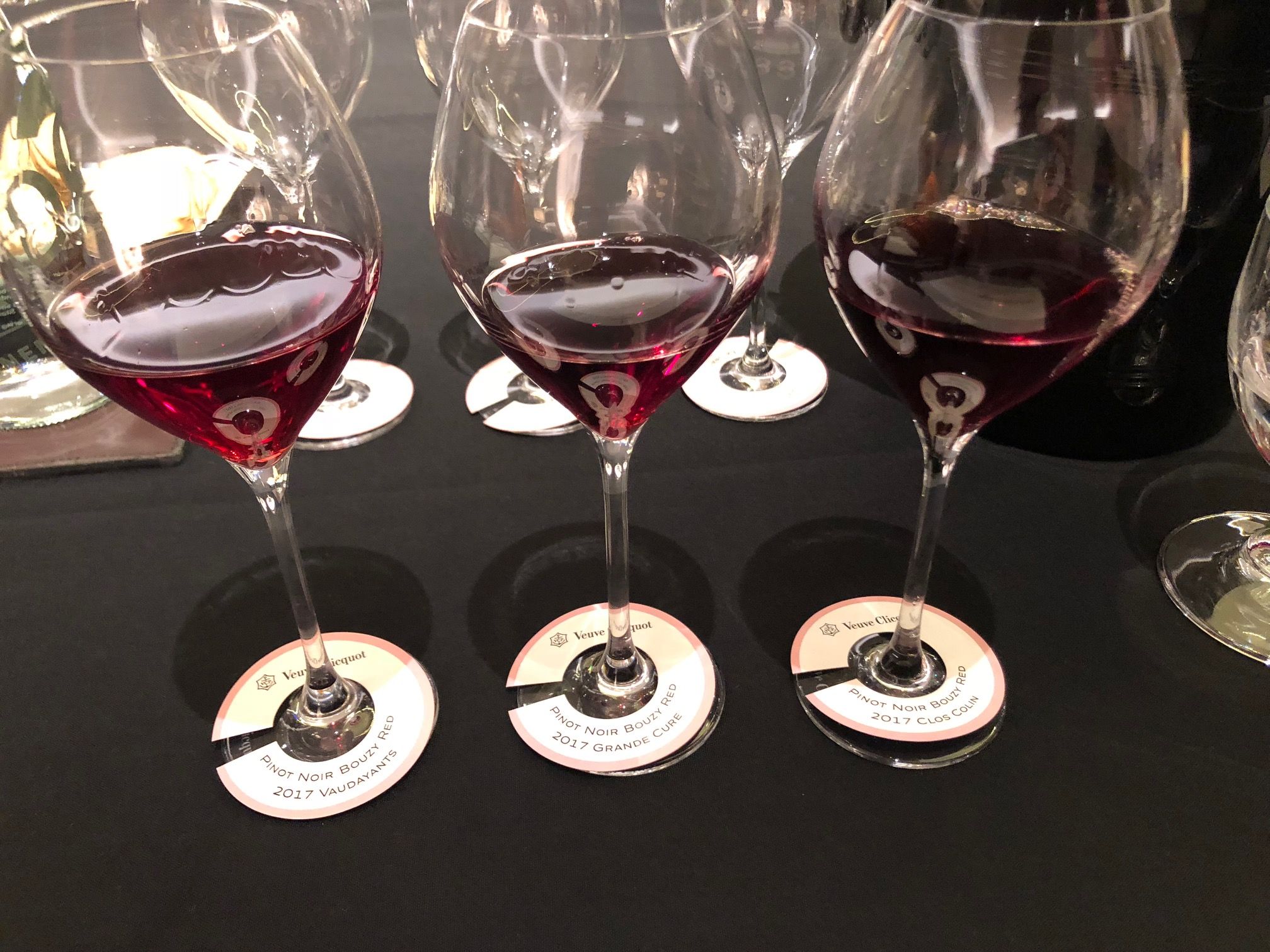Chris tastes three base wines made from the 2017 Pinot harvest in Bouzy as well as finished Champagnes – NV, Vintage 2008, La Grande Dame Rosé 2006 and Veuve Clicquot Brut Rosé 1990.
It is 200 years since Veuve Clicquot first made a true rosé Champagne – two hundred years.

Pierre Casenave, head of red wine production, Veuve Clicquot, London
To celebrate this anniversary the winery’s red winemaker Pierre Casenave held a very special masterclass in London where he showed a handful of red base wines and the Veuve Clicquot rosé Champagnes they go into, before whipping out a special treat from the vaults to complete the tasting.
Pre-1818 rosé Champagne existed but not like we know it today, it obtained its pink hue from the addition of elderberries. Then in 1818 everything changed when Madame Clicquot decided to reinvent rosé Champagne by blending some of her Bouzy red wine with her classic Champagne to create a sparkling wine with not only colour but also additional character, texture and tannin, and it all came from the grape.
Veuve Clicquot never looked back and others soon followed. Today more than 95% of rosé Champagne is made by blending in a small fraction of still red wine.
The secret to the success of the world’s first blended rosé, say Veuve Clicquot, was the exceptional quality of the red wines used, all of which came from sought-after vineyards in Bouzy. Today the quality of the red wines used remains just as high, which is where Pierre Casenave comes in.
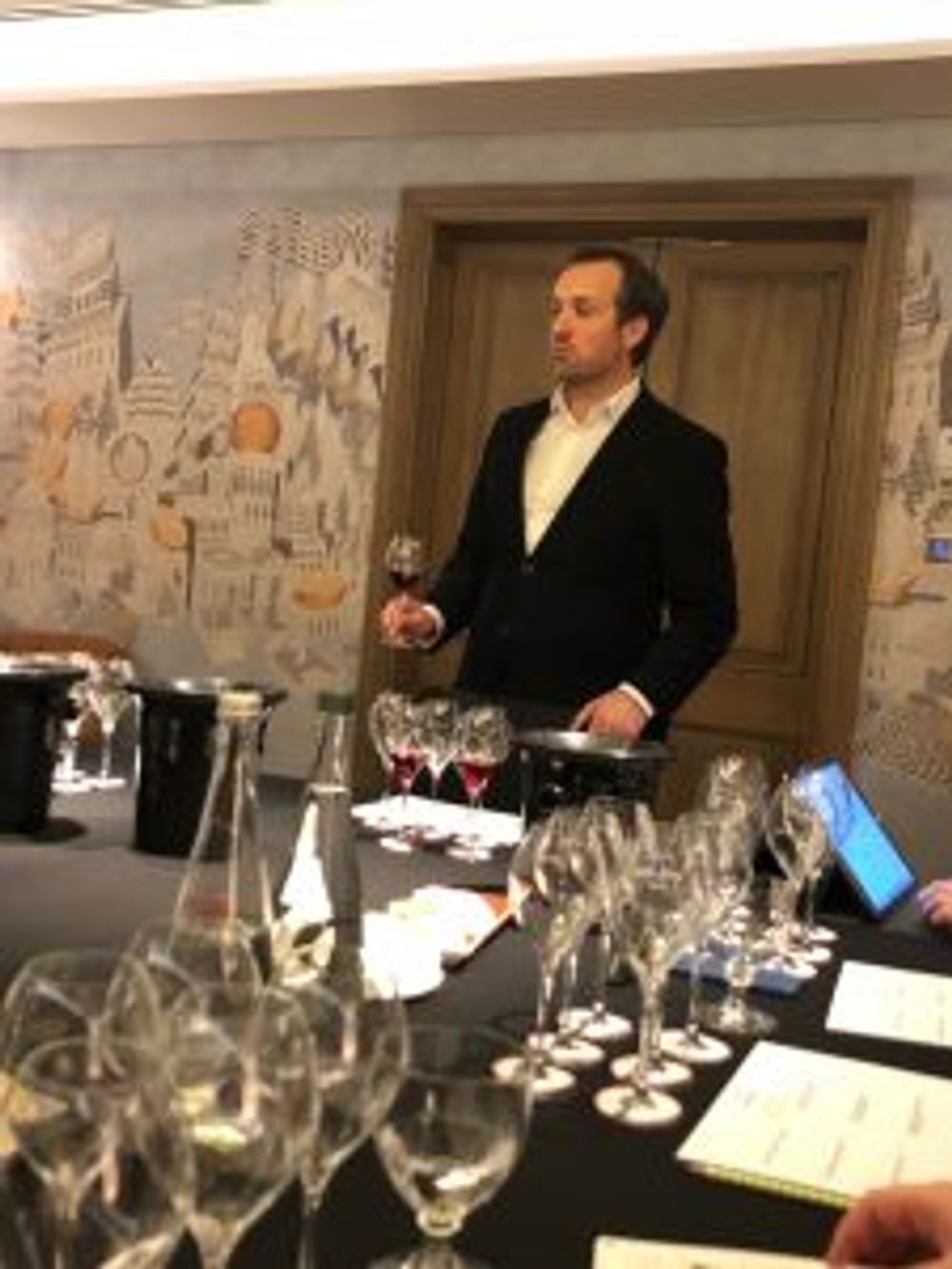
Pierre Casenave: Rosé can age longer than ordinary Champagne
Casenave oversees all red wine production at Veuve Clicquot and takes his job very seriously. It’s all about precision and foresight he tells me; precision in understanding each parcel of grapes, each year’s vintage and how best to manipulate the raw materials for his needs, and foresight in anticipating how each wine will develop over time in tank and how it will react when blended with an altogether different wine sometimes years down the line.
“With the red winemaking you want to avoid over extraction, even a touch of creaminess or bitterness can destroy the blend so it’s very challenging, but at the same time very interesting,” he says passionately.
He produces three separate red wines using grapes from three separate Bouzy vineyards, all are different in style and all end up in different rosé Champagnes – non-vintage, vintage and Grand Dame.
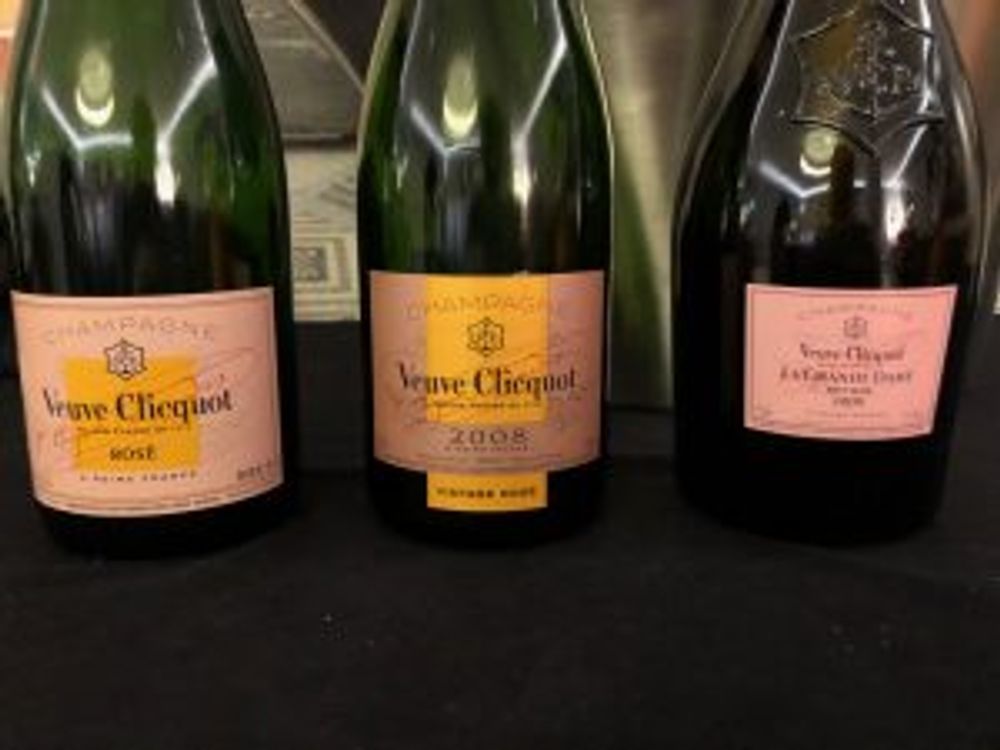
The initial winemaking process is similar across all three wines; there’s an average of two days’ pre-fermentation cold maceration in large stainless steel tanks to bring fresh aromas to the must. Then during alcoholic fermentation each tank receives gentle auto-punch downs to extract fruitiness, colour and a little tannin. Fermentation finishes off the skins.
“I am looking for freshness, elegance and fruit, the common characteristic is to be clean and fruity with nice freshness,” says Casenave. “When I’m talking about ‘fruitiness’ I’m talking about the berry family aromas and a tiny bit of blackcurrant depending on the destination of the wine.”
Following fermentation the wine is aged in tank or barrel before being ‘introduced’ to its sparkling bedfellow when the time is right. The skill here is ageing the wine so that it fits jigsaw-like when blended – so experience and an acute understanding of how each red wine will develop over time is critical.
“When you make red wine you have to anticipate the ageing process,” says Casenave. “You have to anticipate two things; the blending process, the fact that you are going to blend with white wine, and the impact of the ageing process.”
It’s right here that Casenave and other red winemakers in Champagne make their money and their reputation – this is a skill then is learned and comes with time, experience and a laser-focussed palate.
Before tasting the three different red wines, Casenave briefly talked us through the three Bouzy plots used by Veuve Clicquot for its trio of rosé Champagnes. The wine for the non-vintage rosé comes from Vaudayants which produces a wine that’s “a little lighter, more cherry and strawberry aromas and I insist on a fresh level of acidity.”
The Veuve Clicquot Vintage Rosé is made from red wine grown in the Grande Cure plot. “This Champagne is aged a bit longer so the red wine needs to have more concentration… it is slightly peppery, a bit more spicy.”
Finally, the red wine for Veuve Clicquot’s iconic La Grande Dame Rosé is from the prestigious Clos Colin vineyard. “Most of the time it is darker with more concentration and it’s possible to keep the elegance despite the concentration of the tannins. It needs to be velvety and textured,” says Casenave.
Tasting the three Pinot Noirs that will be used in the three blends
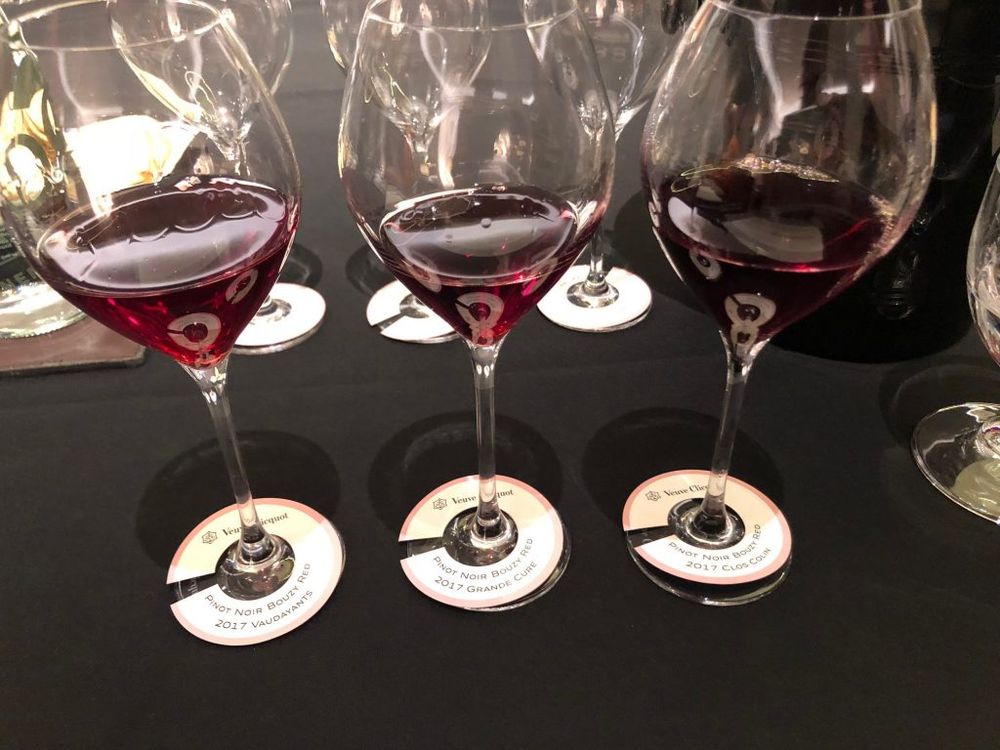
Pinot Noir Bouzy red 2017, Vaudayants
Fresh and crunchy with a red cherry nose and a mineral, stony edge. There’s raspberry and red liquorice on the palate and a hit of green tannin and nuts. High acid, fleshy ruby grapefruit, and a blackcurrant ‘pop’ in the mouth rounds things off.
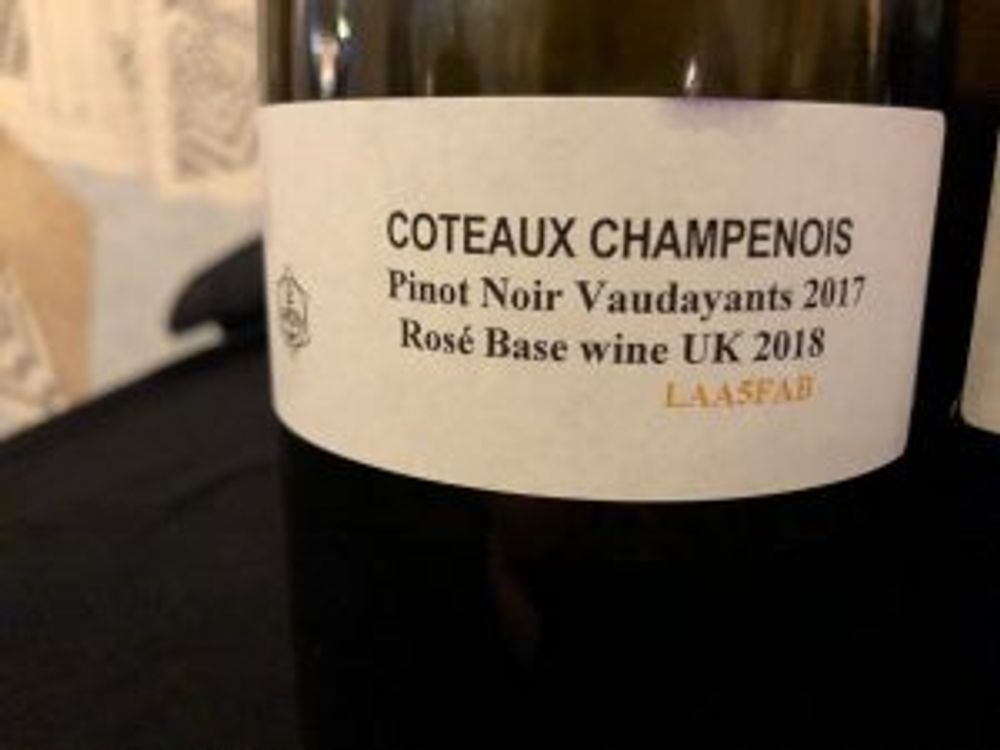
Pinot Noir Bouzy red 2017, Grand Cure
A fuller, richer, more developed wine but still clean and bright. The fruit is full-bodied with ripe cranberry and strawberry, there are grippy tannins and a concentrated, velvety finish. This is quite an aggressive red but will have seven years to age and mellow if it’s going to be used in a VC Vintage Rosé.
Pinot Noir Bouzy red 2017, Clos Colin
There are only one or two tanks of this wine, which goes into the Veuve Clicquot La Grande Dame Rosé. On the nose there’s a distinctive sweetness of fruit which is much riper than in the previous two wines. Overall it’s gentle with blackberry fruit, a little spice and more integrated tannins. Wonderfully rounded.
Tasting the finished wines

Veuve Clicquot Yellow Label Rosé NV
Bright with a strawberry nose. Smooth with gentle bubbles and a delicious lively acidity. More strawberries and a creamy finish round it off nicely. Expressive, easy-to-drink and easy-to-drink again, which is everything you want from a non-vintage Champagne.
Veuve Clicquot Vintage Rosé 2008
Eye-catching salmon pink colour with a rich, earthy nose shot through with a strawberry and vanilla ripple. The strawberry milkshake continues in the mouth joined by a lovely acid kick. 10 years old but still as fresh as a daisy with great purity and length. “At Veuve Clicquot the rosé ages better than the white,” says Casenave, “the tannins protect the wine against oxidation.”
Veuve Clicquot La Grande Dame Rosé 2006
Less than 3,000 bottles of this were produced. It has a delicious fruit salad and summer pudding nose with a hint of from-the-oven baguette. It’s bready and bright with red fruit on the palate and is far more complex than the 2008. It finishes with a watermelon freshness and a broad sweep of acidity and autolysis.

Veuve Clicquot Brut Rosé 1990
To finish the tasting, a bottle of vintage rosé from 1990 was unveiled, and what a fascinating way to end proceedings, showing just how wines like these can develop and mature. It’s caramel in colour with a kirsch nose and a savoury tang. There’s poached pear and pomme, salt and cigar, all wrapped up together in an intriguing bundle of Tizer-tinged joy.

